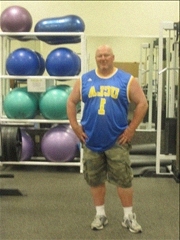Tutor HuntResources Special Needs Resources
Tutoring Children With Special Educational Needs (sen)
Strategies employed for special needs learners
Date : 25/07/2013
Author Information

Uploaded by : Nigel
Uploaded on : 25/07/2013
Subject : Special Needs
Tutors must make lessons as brief as possible. Also a large presentation should be divided into various sections. Each and every student must participate actively and with interest in the lesson presentation. An ADHD student can be appointed as the instructional aid who will write down the key ideas and words on the board.
ADHD students must be encouraged to develop mental images of those concepts and information that are being taught to them. It is essential to clarify whether they are visualizing the correct mental images of the main material. The response of the students in class is real important. Spontaneous choral responding, frequent addressing on many individuals, and response through hand signals are to be allowed.
Role playing activities to act out key concepts, historical events, etc can be tried out with the students and these activities are creative too. I have made my students use trees and cars and various other objects in the parking lot, representing the events and places in history, to get acquainted with the history of the Revolutionary War. And it can work really well with the students. The more exciting a lesson, the more easily it is learned by children. And for this the teacher must also be able not only to teach but also motivate and entertain the students. In other words the teacher should take an active interest in what he/she is teaching.
The ratio between the students and the teacher should be as less as possible which would help in an increasing feedback during times of difficulty. Parent volunteers,para-professionals,or support staffs can be made to include themselves in this work. It has been observed that students respond better to such situations which they find captivating. A student will find his lesson interesting if the instructional medium and pace are varied from time to time. Students find those lessons interesting which insist on `hands-on` activities. The time required for a particular activity must always be coupled with more active learning which would contribute to an improved performance of a student. Group activities are important and for this every child must be included in a group in which he has got a specific role to play. Learning stations, clear signals and procedures help in the student transition from one center to another. Learning a lesson must be made to appear as if a child is playing a game. For example, a game like `dictionary scavenger hunts` can be effectively employed to teach proper use of reference/resource materials
Sharing both a physical and a verbal communication with the student is considered conspicuous. During a lesson a student can be addressed by his/her name. There should be a personal interaction with each and every student and the teacher must make an attempt to write about the key elements of the lesson. The students can check one another`s work. Peer tutoring is effective in helping a student to review his/her concepts which would help the struggling student to get more acquaintance with recently learned concepts. Use coloured chalk on the black board for emphasis during presentation of a large volume of information. Proper emphasis on words and pitch variation by the instructor will result in an increased attention of the students. The tutor must always make it sure that the students establish an eye contact with him so that the student`s understanding and following the instructions are improved. A student always works better when he is given one instruction at a time otherwise the child tends to get confused. Multiple modes of instruction including verbal directions coupled with demonstrations of a desired task increases the chances of successful learning of a task. If the student is given a chance to paraphrase the instructions that he or she received from his or her tutor, then there will be an increased ability of comprehension and an opportunity to clarify for better understanding.
Summary
This article does not really tell us anything new but it does give us a set of guidelines and strategies that which we can follow and adhere to. Many SEN learners require focus which in return requires a routine and such routines are essential in understanding how to project work. The VAK system of learning techniques, (Visual, audible and kinetic/tactile) favours a mixture of techniques but tactile responses where they can manipulate, sort and identify what goes where in terms of the bigger academic picture is essential for their successful learning experience.
This resource was uploaded by: Nigel
